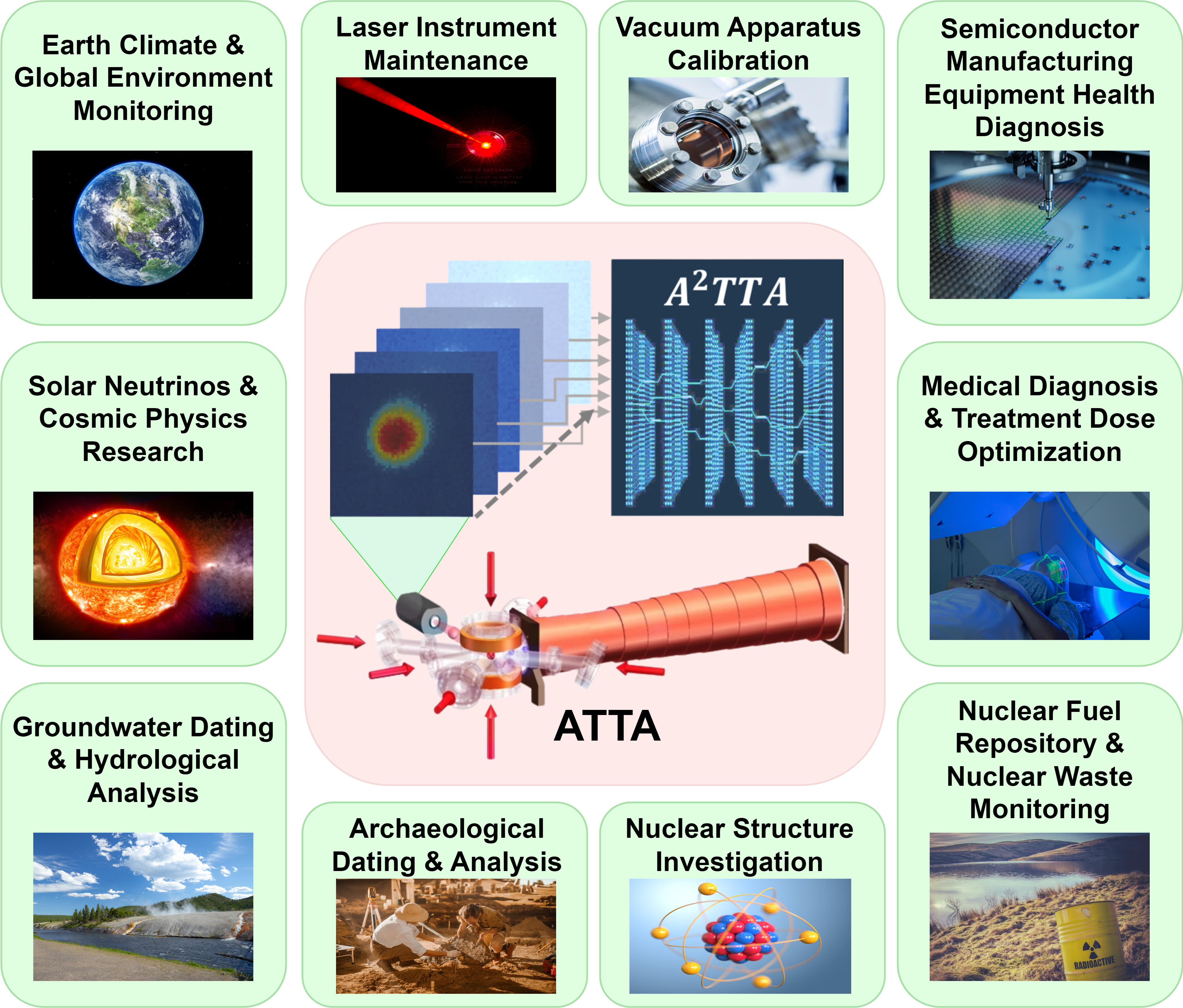The detection and analysis of radioisotopes play a vital role in diverse scientific research and technological applications, spanning fields like archaeology, hydrology, cosmochemistry, biomedicine, and nuclear monitoring.
Atom Trap Trace Analysis (ATTA)
Atom Trap Trace Analysis (ATTA) offers a groundbreaking technology for analyzing rare gas isotopes, exhibiting remarkable sensitivity and selectivity in detecting single atoms. The accurate and swift detection of radioisotopes within ATTA systems is particularly essential for nuclear surveillance, especially for organizations like the Defense Threat Reduction Agency (DTRA) and other Department of Defense (DoD) agencies. This enables the prompt monitoring of nuclear activities such as nuclear fuel processing/recycling, nuclear weapon trials, and accidental emissions.
Limitations of Current Methods
The conventional approach used by DTRA involves numerical integration algorithms and statistical fitting. However, this method has limitations:
- Limited accuracy due to incidental photon counts
- Additional uncertainties introduced during quantification
- Inefficiency in handling ultra-low/high abundance samples
- Prolonged processing and analysis times
A2TTA: AI-Based Solution
To overcome these challenges, the DTRA awarded InfoBeyond Technology a contract to develop A2TTA (AI-based ATTA), an innovative solution powered by a deep learning architecture. A2TTA aims to automate radioisotope detection and analysis with high precision and effectiveness. It can learn a wide range of image features, enabling accurate atom identification and quantification across various count rates and abundance levels in real-time.
Applications of ATTA Technology
ATTA has emerged as a powerful tool for detecting trace radioisotopes of noble gases, offering contamination-free isotope trace analysis across various applications:
- DOD and Non-proliferation Real-Time Nuclear Monitoring: For accurate, real-time radionuclide detection and monitoring of nuclear activities.
- Radiometric Dating: Applications in geology, paleontology, archaeology, environmental science, and chemistry.
- Medical Applications: Medical diagnostics, dose optimization, and the use of medical isotopes.
- Industrial Apparatus Health Diagnosis: Real-time health monitoring of industrial facilities.
- Long-term Evaluation of Nuclear Safety: Assessing the safety of nuclear waste repositories.
- Solar Neutrinos and Cosmic Physics: Analyzing rare isotopes to study cosmic rays and detect solar neutrinos.
In conclusion, while the high cost of ATTA has limited its widespread use, A²TTA addresses this by reducing analysis expenses and enabling the broader application of ultrasensitive trace-isotope analysis across various industries.
